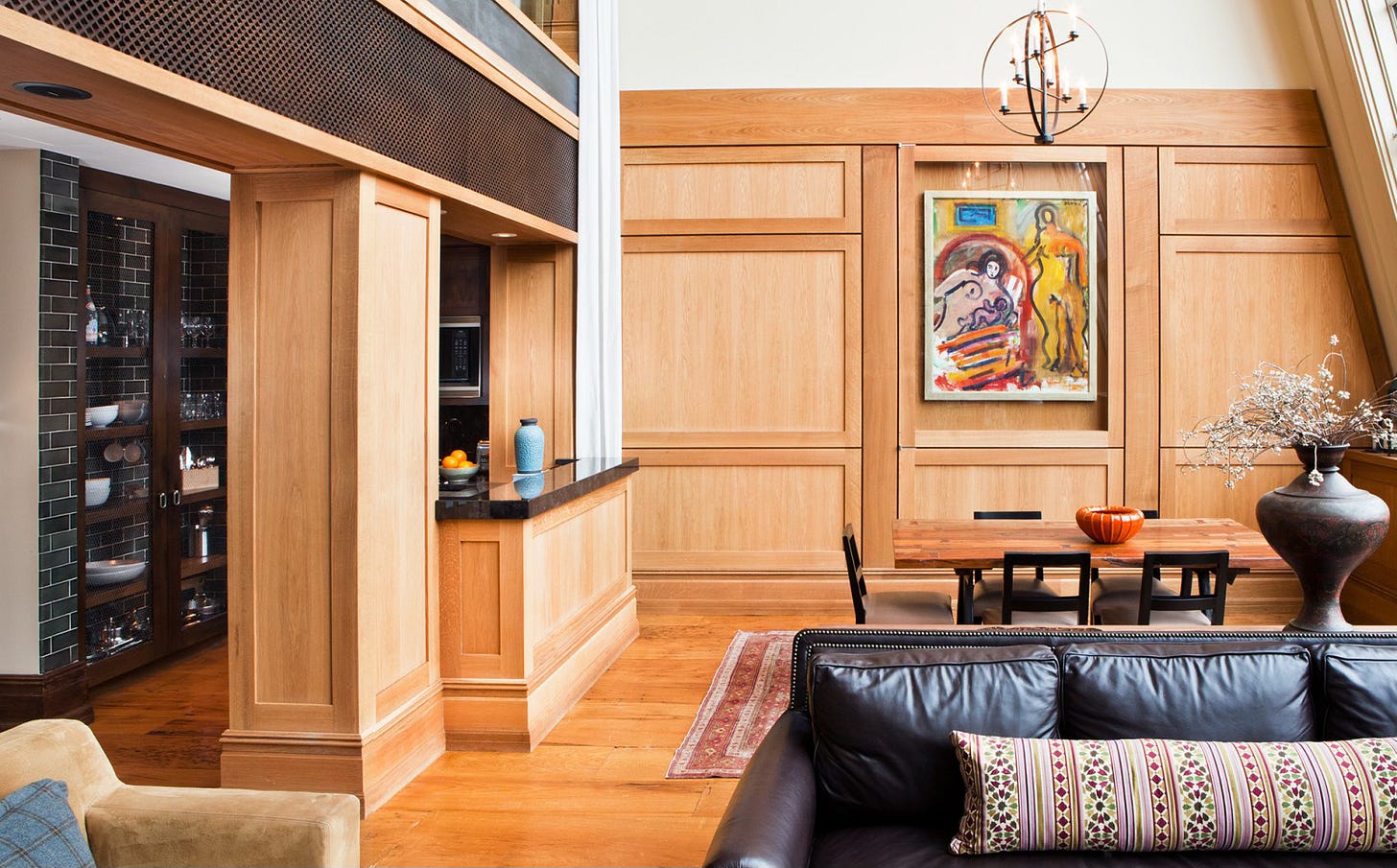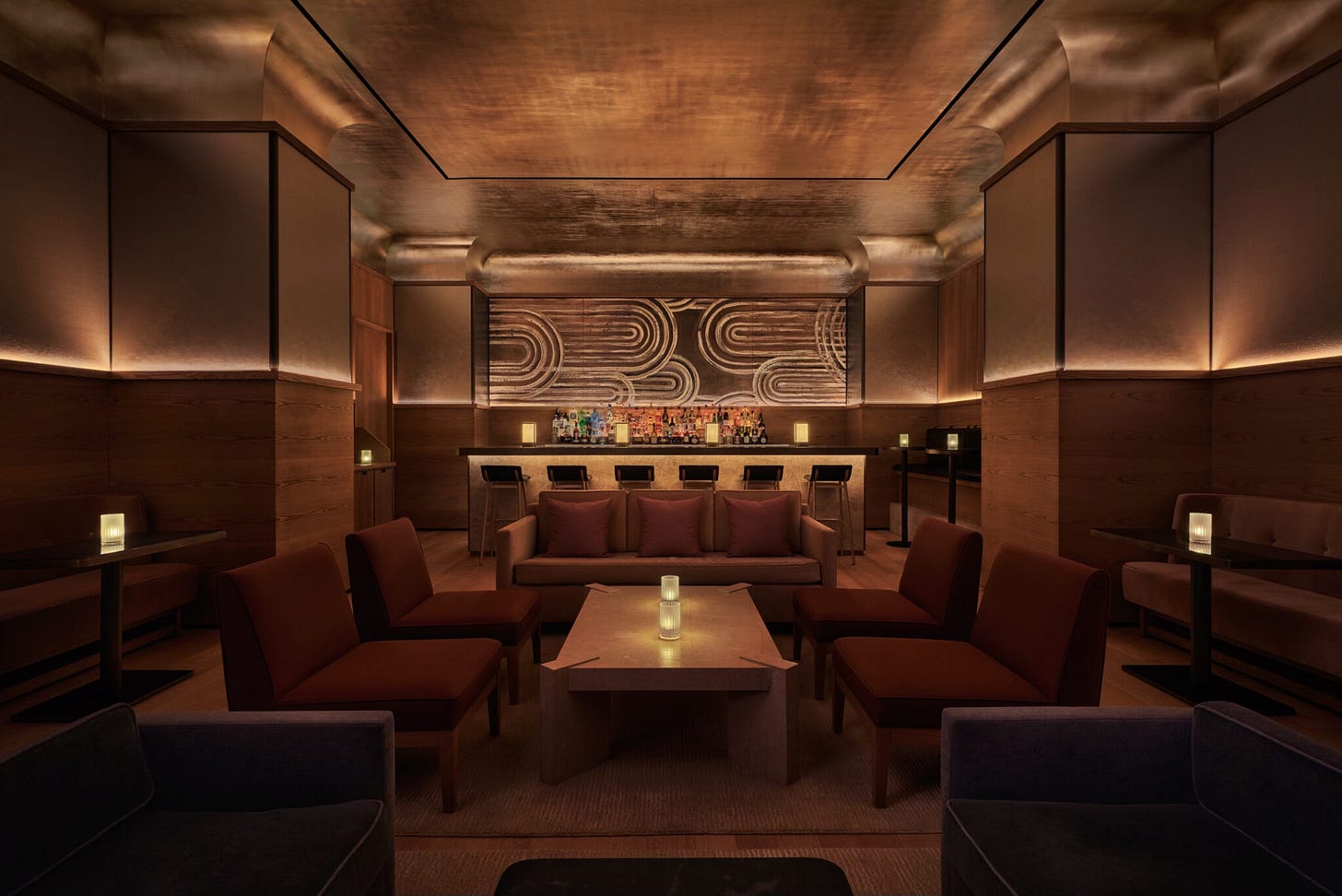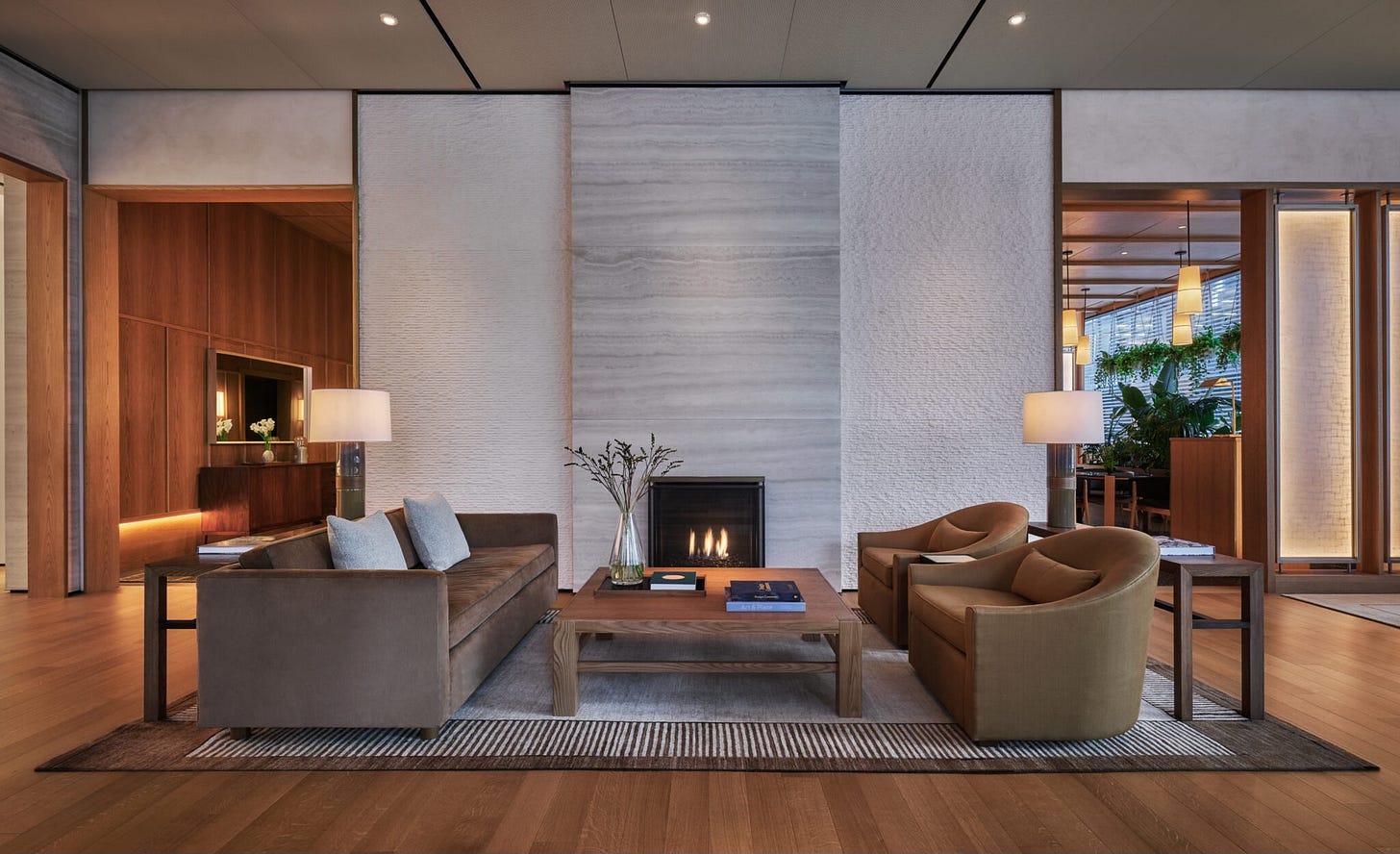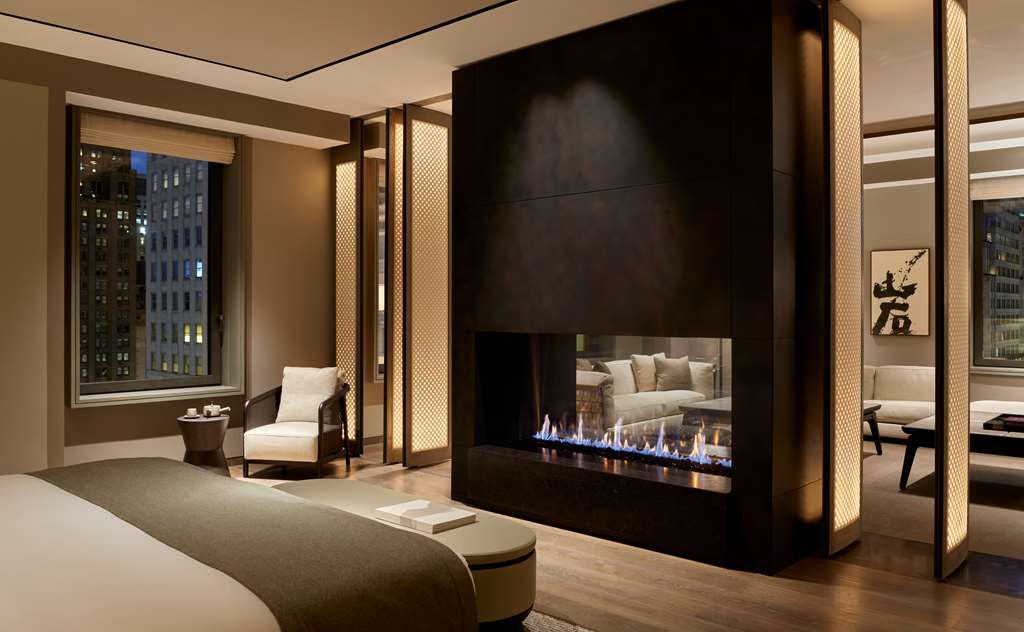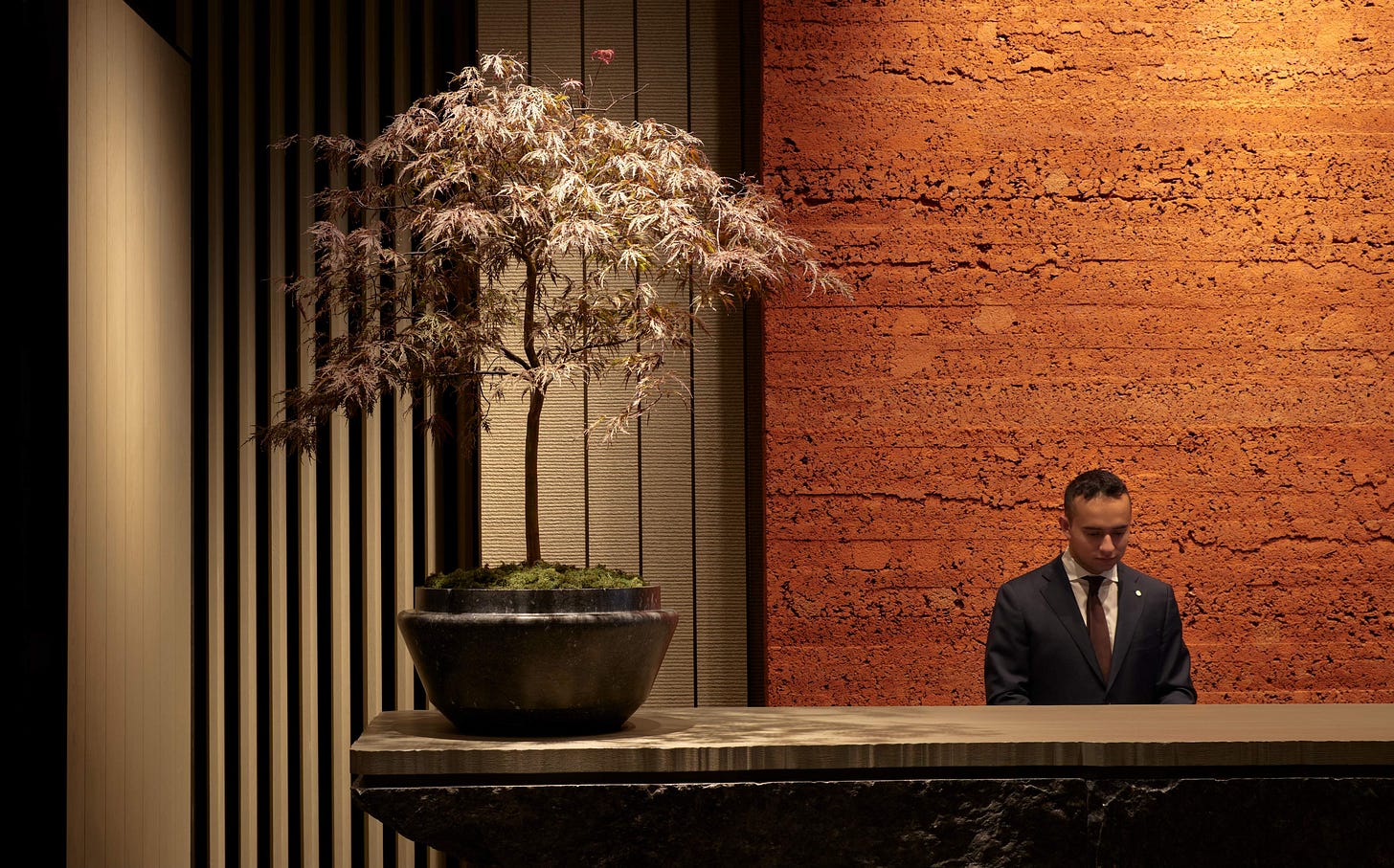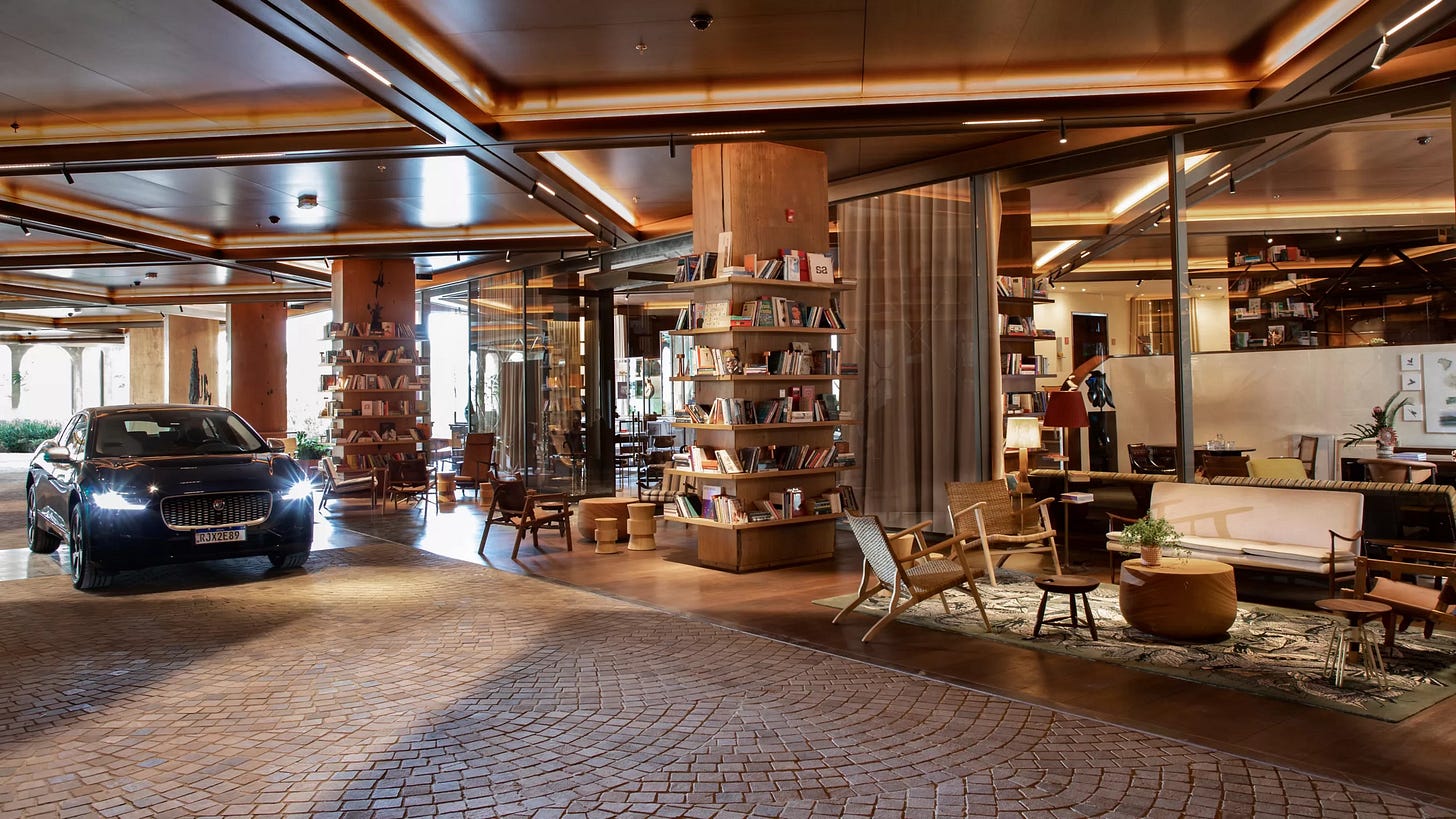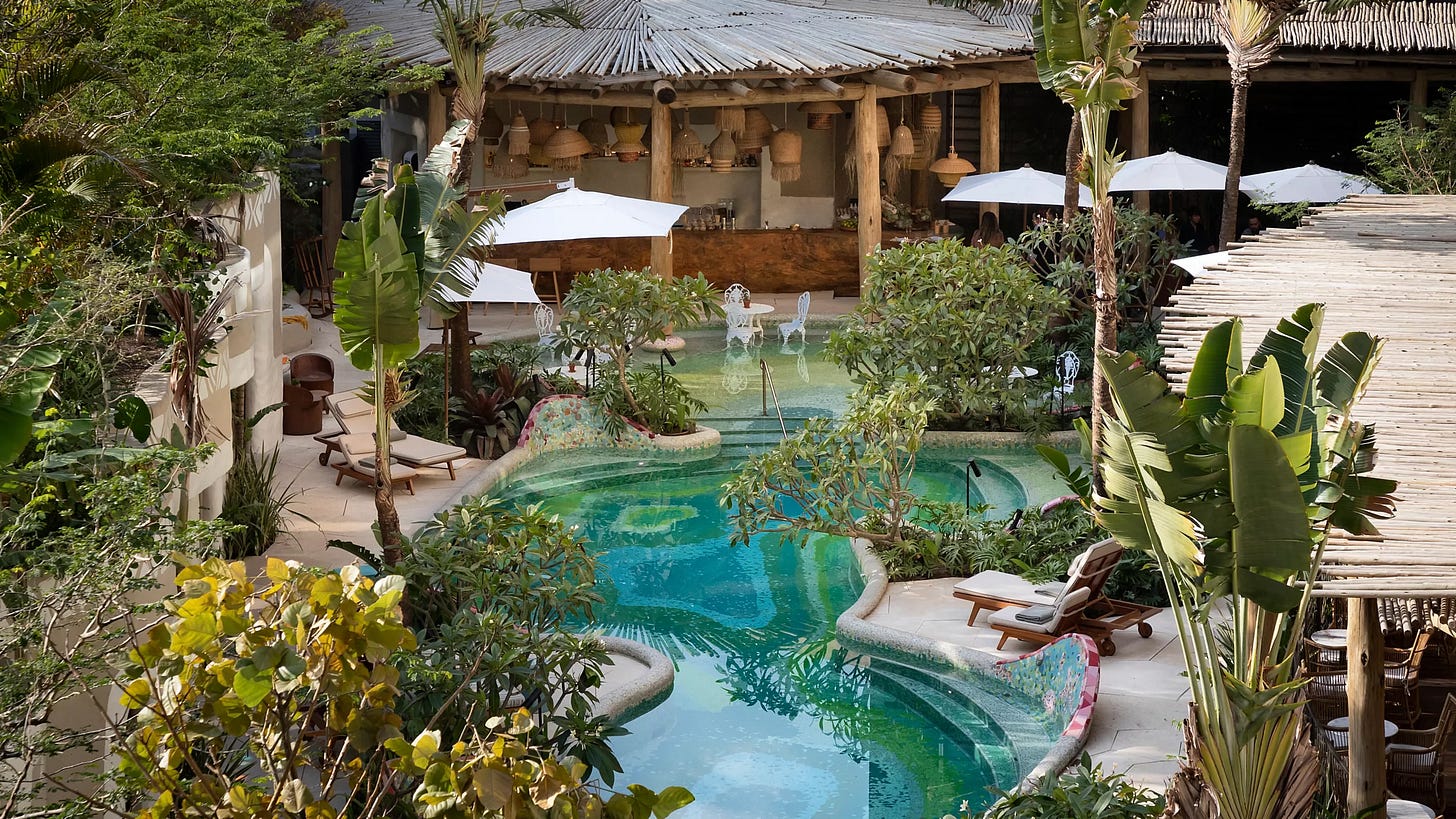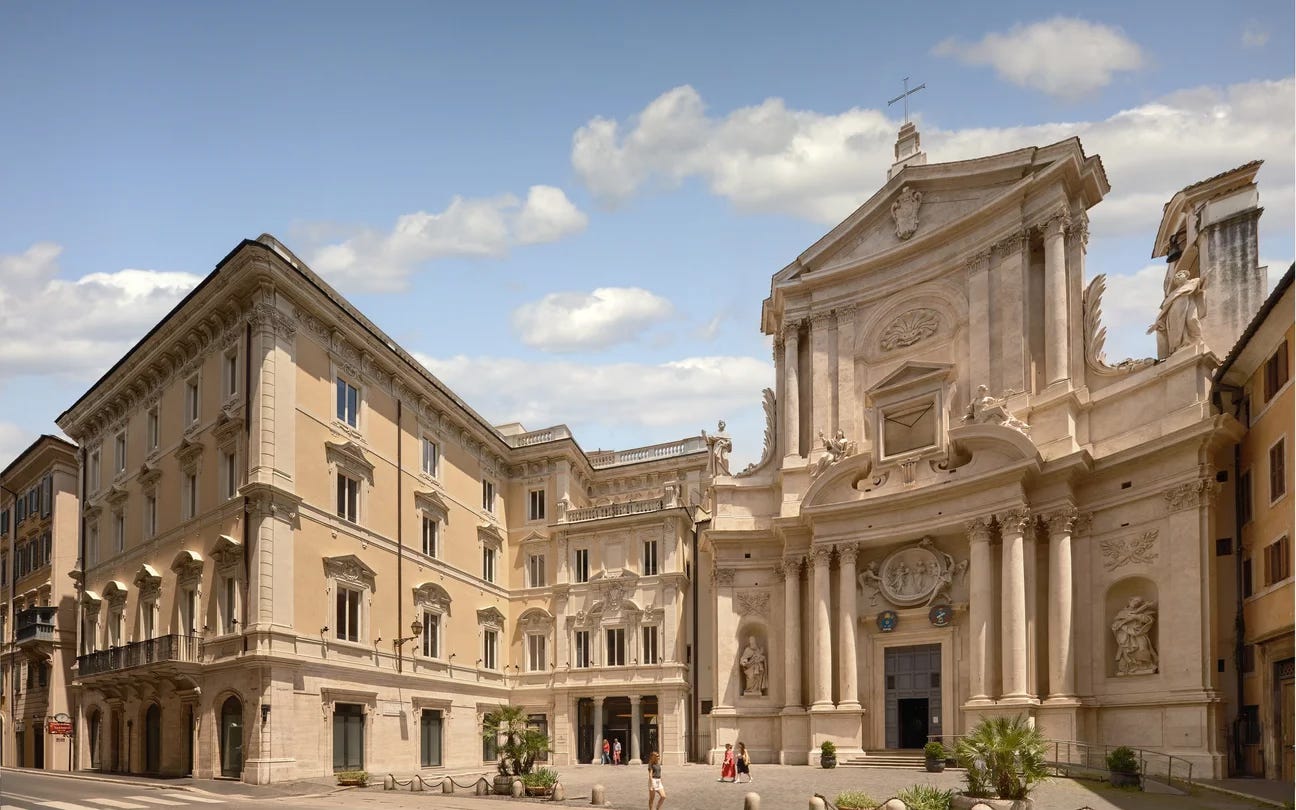The Miracle of a Luxury Hotel: How Design Survives the War Room
The fact that any hotel feels cohesive, let alone transportive, is a small miracle. Here's why.
The experience of stepping into a truly great hotel feels effortless. A seamless flow from street to lobby, the weight of a well-balanced door handle, the hushed acoustics that make even a busy space feel intimate. But in reality, most hotels don’t arrive at this level of refinement by design—they get there in spite of it.
The Greenwich Hotel, New York City - N. Moore Penthouse
Unless you are a privately owned entity, like The Greenwich Hotel in New York City's Tribeca neighborhood - with actor Robert De Niro being one of its owners, along with other partners like Ira Drukier and Richard Born of BD Hotels - hotels are built by committee.
In my previous career as Director of Communications for a beautiful luxury watch brand, I chose this penthouse for a press preview and learned that this oil painting set into the cabinetry is by Robert De Niro’s father. I found this intimate and connecting detail so sweet, and it inevitably became the charming anecdote that sweetened every conversation I had with journalists in the space that day.
So, outside of these privately operated gems, a luxury property isn’t a single vision brought to life—it’s a negotiation between landowners, banks, investors, brand executives, developers, and designers, all with conflicting priorities. By the time a hotel reaches its opening day, the number of decisions made—often with little regard for guest experience—could fill a war room. The fact that any hotel feels cohesive, let alone transportive, is a miracle.
Who Really Builds a Hotel?
Luxury hotels exist at the intersection of financial strategy and sensory experience. But finance usually wins.
• The Investors: The ones writing the checks, often without fully understanding the product. Their main concerns: risk, ROI, and the liquidity of the asset. A hotel’s brand name, rather than its design, is often the key to securing their capital.
• The Hotel Group: The operator licensing its name to the project—often Four Seasons, Auberge, Rosewood, or another player with built-in credibility. Their power is significant, but their control is limited; most don’t own the properties they operate.
• The Developer: Balancing a pro forma that includes rising material costs, construction overruns, and debt financing, they’re under pressure to hit a financial target. The first thing to get cut? Any design detail that doesn’t have a measurable impact on ADR (average daily rate).
• The Architect & Interior Designer: Tasked with translating a vision into a functional space, they navigate constant cost-cutting and approval layers. If they’re powerful enough, they fight back and preserve the design intent. If they’re not, they compromise.
Most hotels—especially new builds—end up being a reflection of the financing rather than the vision. The ones that rise above do so because someone—whether a brand, a developer, or a designer—had enough leverage to protect the idea.
The Pendry ManhattanWest Hotel, New York City | Designed by Gachot Studios
The Hotels Getting It Right
Some hotels today are breaking through this cycle, not because they have bigger budgets, but because they have a more disciplined point of view.
1. AMAN GROUP | The Ultimate Brand Control
Aman isn’t just a hotel operator—it’s a real estate company, a product company, and a cultural force. Unlike most luxury brands, Aman doesn’t just attach its name to projects—it controls them, selecting development partners that align with its aesthetic and operational values.
If you follow the brilliant Nadine of The Stanza, you can learn more about the tumultuous change of hands Aman has withstood, and be even more impressed that its design and magic have (mostly) been preserved and even expanded all this time.
Aman, New York City
Its latest opening, Aman New York, is a case study in brand dominance. The group partnered with architect Jean-Michel Gathy of Denniston, whose precision in spatial design has helped define Aman’s DNA for decades. The interiors, led by Kerry Hill Architects, stripped away the usual distractions of urban hospitality—no loud branding, no unnecessary clutter, just a very high-stakes exercise in restraint. It’s one of the few hotels where the word “sanctuary” isn’t just marketing copy; it’s built into the architecture. The fact that sanctuary in itself is such a high-priced commodity says everything we need to know about what is truly scarce for even the most privileged of consumers these days.
2. ROSEWOOD | The Rise of the Localized Luxury Hotel
If Aman’s strength is purity, Rosewood’s is adaptability. Rather than imposing a single aesthetic across all properties, Rosewood’s strategy is to embed itself in the cultural and architectural history of each location.
Rosewood São Paulo, Brazil (above)
At Rosewood São Paulo, developer Alexandre Allard enlisted Jean Nouvel to design the exteriors and Philippe Starck to craft interiors that merge the city’s modernist and colonial pasts. The result: a property that feels like a living part of São Paulo’s history, not a hotel forced onto its streets. This same principle is at play in the upcoming Rosewood Amsterdam, housed in a former courthouse, with interiors by Nicola Fontanella that honor the original structure rather than overwrite it.
Rosewood São Paulo, Brazil (above)
3. SIX SENSES | Sustainability as a Design Principle
Unlike many brands using sustainability as a PR tool, Six Senses embeds it into the design process from the outset. The group’s expansion into urban markets—starting with Six Senses Rome—is a shift from its traditional resort model, but it’s proving that sustainability and luxury don’t have to be at odds.
At the Rome property, designer Patricia Urquiola worked within the constraints of a UNESCO-listed building, stripping back layers of unnecessary restoration and allowing original materials to dictate the interiors. The hotel’s energy systems, waste processing, and even guest amenities are structured around minimizing impact. The result: a property where sustainability doesn’t feel like a trend but a foundational part of the experience.
Six Senses Rome, Italy (above)
Why This Matters (And Why I Care)
The best hotels don’t just have good design; they have design that survived. Every detail—from the weight of a key card to the placement of a single chair in a lobby—exists because someone fought to keep it there.
Growing up in an Italian family, I learned that hospitality wasn’t just a transaction—it was a sign of intelligence. The way you hosted guests, the ease with which you anticipated their needs, the effortlessness of the experience—all of it signaled the mastery of an elite social craft—awareness, elegance and savviness. Great hospitality is a language of its own, understood by those who knew how to read between the lines.
That’s why I created The Lobby. My background in artisanal product design, luxury communications, and branding has given me a front-row seat to how these spaces feel, what sets them apart—and how often they fall short. This newsletter is about dissecting the forces shaping luxury hospitality, from the boardroom to the lobby floor.
In the coming weeks, I’ll be diving into:
• Who are the hospitality groups, brands, and developers ushering in the new era of luxury nuance, and how are they doing it?
• How does luxury hospitality make one feel exactly, and why it’s valuable in 2025 to reveal deeply thoughtful design moments throughout guest experiences.
• Why brands should commission original art for their properties and not be caught dead ripping anyone off in today’s social media climate.
If you care about hospitality, not just as a business but as case study in culture, design, and economy, come meet me in The Lobby.
— Gabriela Anastasio
Founder, Anastasio Home



